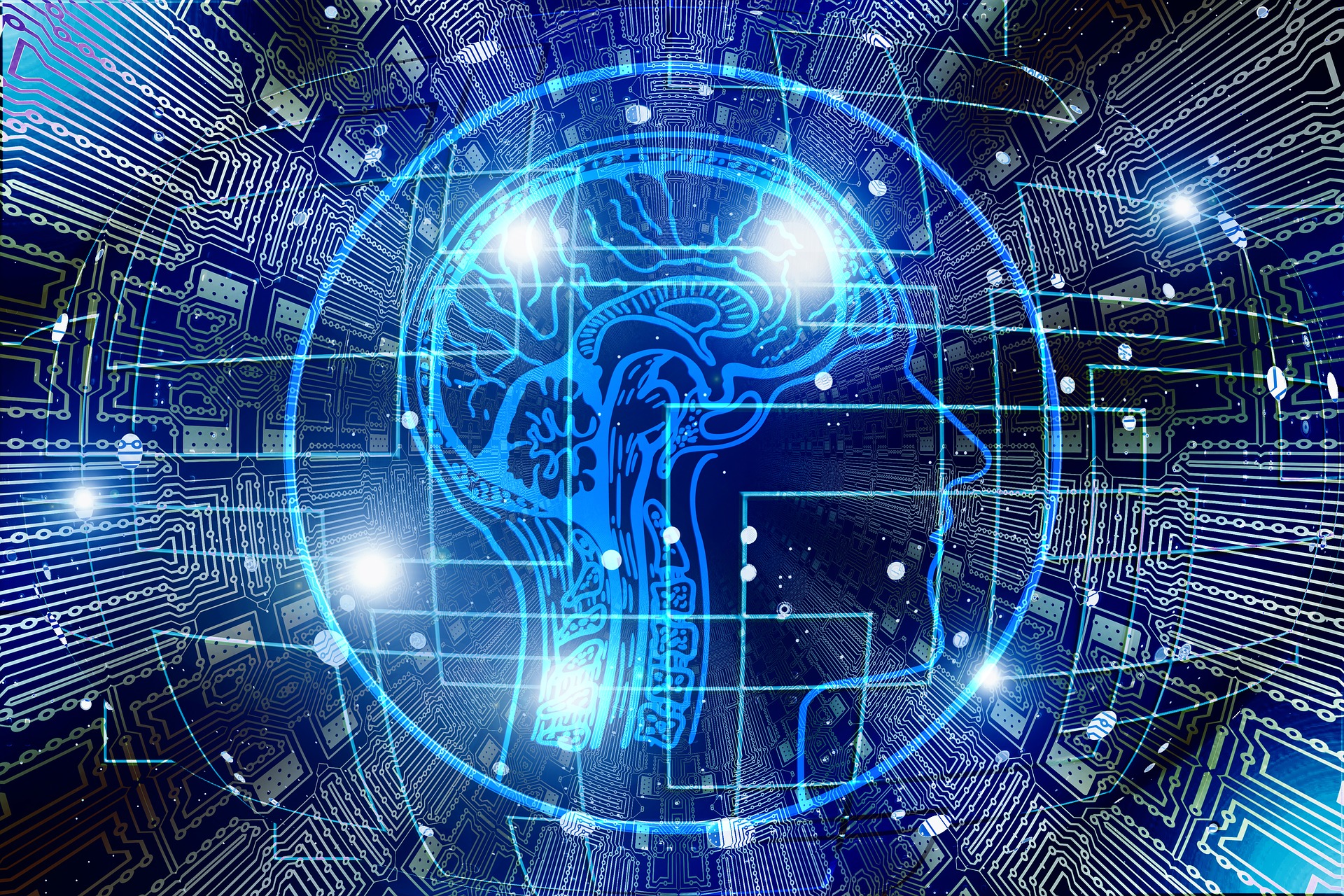Prototype demonstration of the Metropolitan Musuem of Art’s “Artwork of the Day”. Source: https://www.metmuseum.org/about-the-met/policies-and-documents/open-access/met-microsoft-mit
Artificial intelligence continues to make its way into the main stream and into multiple industry sectors. The arts are no exception. Over the past few years we have begun to see a wave of organizations use artificial intelligence as a method to both enhance the audience experience and generate new creative expression.
In particular, museums seem to be at the forefront of adapting AI technology as part of their exhibition strategy. Recently the Metropolitan Museum of Art announced their collaboration with MIT and Microsoft to deliver a series of projects utilizing AI to enhance global connection, access, and the audience experience. The first in the series of projects is Artwork of the Day which uses AI by pulling open data from users and delivering an artwork from the collection that it believes will resonate with the user.
Tag, That’s It utilizes crowdsourcing and AI to generate more accurate keywords, thus, enriching to collection within a more global Wiki community. Storyteller takes voice recognition AI and selects an artwork in the museum that illustrates a story or conversation. The My Life, My Met project uses AI technology to analyze posts from Instagram and then selects a piece from the Open Access collection that most closely matches the user’s photo. The final project will be Gen Studio, which uses a complex weaving of GANs to encourage users to explore the latent space under the museum’s collection.
“Tag, That’s It!” prototype demonstration at the Metropolitan Museum of Art’s reveal event. Source: https://www.metmuseum.org/about-the-met/policies-and-documents/open-access/met-microsoft-mit
Another great example of museums utilizing AI technology to increase audience engagement is the Museu do Amanha located in Rio de Janerio, Brazil. Here, the museum uses an AI system powered by IBM Watson named Iris+ that was designed by the company 32Bits. Iris+ was designed to help users better understand and contextualize the exhibit and experience by engaging in open ended questions with audiences and showing how their thoughts, concerns, and experiences relate to other patrons. In an AMT-Lab interview with Daniel Morena from 32Bits, he described that Iris+ is a way for people to experience a new technology. Using an RFID card, users can explore the museum and at the end of the exhibit can summon the AI interface and actively converse with it based on its provocations.
Data visualization screens for Iris+. Photo Credit: Nancy Torres https://www.aam-us.org/2018/06/12/iris-part-one-designing-coding-a-museum-ai/
The AI system is continuously being fed data to expanded that range of knowledge and topics it can discuss through these open ended questions and conversations with users. The audience engagement tactics through Iris+’s data visualization allow users to see themselves in the greater context of other visitors. It is not meant to be passive, Iris+ has been designed to invite you to engage and interact. This is one hallmark of successful AI integration as an audience engagement tactic, making sure there is a clear invitation for audience members to engage with the technology that moves beyond passively consuming information about art.
The use of artificial intelligence in the entertainment industry is also expanding. The Canvs company has developed a survey for viewers that utilizes AI to collect data on audiences emotional response to programming. The company believes that the insights gathered are a key component to making business decisions. For example, if findings show a positive emotional response to a specific character, the creative executives may decide to focus their efforts on developing that character’s storyline. The AI system has the ability to crunch data from thousands of surveys and allows for the fielding of more open-ended questions. It then takes these responses and measures and categorizes them using a standardized set of emotional tags.
While museums and the entertainment industry are growing their investment in AI technology for the user experience, performing arts organizations are less active in using this technology. Initial research turned up very few instances of AI being used as a tool for engagement in performing arts organizations beyond some organizations beginning to implement chatbots to help answer standard FAQ’s. In fact, it appears that in the performing arts, the majority of AI technology is being used in the creation of the art itself. In June 2016, Google created the Magenta project which was developed to use AI in the creation of new art and music, with its first release being a 83-second long piano piece. The Japanese company Amadeus Code has also released an artificial intelligence power song writing assistant. This technology uses an algorithm to scan a diverse database of music and then, based on user specifications, the app creates an instrumental harmony.
A performance of "HumanMachine: Artificial Intelligence Improvisation" at the Edmonton Fringe Festival. Credit: Alessia Pannese: https://techxplore.com/news/2018-09-improbotics-machine-intelligence-theatre.html
Theatre also creates AI generated material, like the company HumanMachine. This company developed a new production entitled Improbotics which utilizes both humans and machines running AI technology. This deep-learning based artificial improvising machine based on a chatbot technology was trained on movie subtitles and has been able to generate believable and contextually relevant dialogue suitable for theatrical performances. Though the bot has its limitations in timing and emotional delivery, it is powered by the most current algorithms used for automated speech and language translation.
As time goes on, it’s clear that artificial intelligence will continue to find its place in the arts. Using AI to build connections with audiences, in particular, is an interesting and developing sector of arts and technology. Museums are leading the way in discovering the intersection between arts and audience engagement strategies with projects like the Met and Iris+. The performing arts, while having developed AI for the creation and expression of art, are not yet at the forefront of AI for engagement. However, the current arts and technology landscape is ripe for investigating new opportunities for the performing arts to utilize AI as a tool for audience engagement.
Resources:
Ding, Mandy, “Putting the ‘Arts’ in ‘Artificial Intelligence.’” AMT Lab @ CMU, October 3, 2016, Accessed February 20, 2019, https://amt-lab.org/blog/2016/10/putting-the-arts-in-artificial-intelligence-1.
Dobronauteanu, Carla, “Amedeus Code: Brave New World of A.I. Music Generation,” Arts Management and Technology Laboratory, January 18, 2019, Accessed March 17, 2019, https://amt-lab.org/blog/2019/1/jnedfijxaogfkycthuu8bxa8tcyem8.
Fadelli, Ingrid, “Improbotics: Bringing Machine Intelligence into Improvised Theatre,” Tech Xplore, September 20, 2018, Accessed February 21, 2019, https://techxplore.com/news/2018-09-improbotics-machine-intelligence-theatre.html.
Iyer, Jenee, “Podcast: Daniel Morena Discusses Powering Audience Engagement with Artificial Intelligence,” AMT Lab @ CMU, December 3, 2018, Accessed February 20, 2019, https://amt-lab.org/blog/2018/12/podcast-daniel-morena-discusses-powering-audience-engagement-with-artificial-intelligence.
Leddy, Chuck, “New Collaboration Sparks Global Connections to Art through Artificial Intelligence,” MIT News, February 5, 2019, Accessed February 22, 2019, http://news.mit.edu/2019/mit-collaboration-sparks-global-connections-art-artificial-intelligence-0205
Morena, Daniel “IRIS+ Part One: Designing + Coding a Museum AI – American Alliance of Museums,” American Alliance of Museums, June 12, 2018, Accessed February 20, 2019, https://www.aam-us.org/2018/06/12/iris-part-one-designing-coding-a-museum-ai/.
Spangler, Todd "CBS Turns to Artificial Intelligence to Glean Viewers’ Emotional Responses to TV Shows," Variety, February 20, 2019, https://variety.com/2019/digital/news/cbs-canvs-artificial-intelligence-tv-emotional-response-1203142779/.





